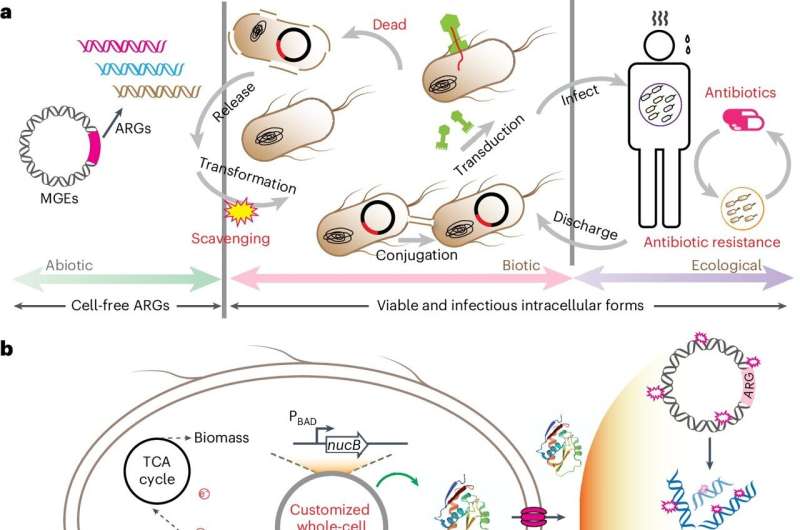
For nearly a century, scientists have waged war on antibiotic-resistant microbes. Michigan State University researchers say they’ve found a new way to prevent it—by unleashing “DNA scavengers” in wastewater treatment plants.
Syed Hashsham, MSU professor of civil and environmental engineering, and James Tiedje, University Distinguished Professor Emeritus in the departments of Plant, Soil and Microbial Sciences as well as Microbiology and Molecular Genetics, found an enzyme that breaks up strands of antibiotic-resistant DNA floating in wastewater before bacteria can pick them up and take on their antibiotic-resistant properties.
Hashsham said this could be a powerful, environmentally friendly tool to control the spread of antibiotic resistance in wastewater and help keep antibiotics effective.
The two MSU researchers published their findings in Nature Water on Aug. 19, along with faculty from the University of Science and Technology of China. Hashsham wants to continue testing the enzyme and exploring its use as a wastewater disinfectant.
“As with any new discovery, there is more work to be done to optimize the technology,” Hashsham said. “But it is really a very novel technique.”
Antibiotic resistance has plagued modern medicine since the invention of penicillin, largely due to misuse and overprescribing. Bacteria constantly evolve and try to survive as new antibiotics are introduced to the market. Each new antibiotic only lasts about five to eight years before bacteria adapts, making infections hard to treat, Hashsham said. This technology could help preserve the effectiveness of current antibiotics
While doctors are more cautious about prescribing antibiotics today, scientists are also working to prevent antibiotic-resistant microbes from spreading. One hot spot for antibiotic-resistant microbes is in wastewater treatment plants, as infected people release the bacteria in their feces.
Also found in the wastewater are mobile genetic elements carrying antibiotic-resistant genes. As they’re picked up by pathogenic bacteria, they take on the gene’s antibiotic resistance.
Researchers had the idea to use what’s known as a restriction enzyme. These enzymes act like a pair of scissors, cutting genetic material into so many pieces that they’re useless. They’re well known in molecular biology but hadn’t yet been used for antibiotic resistance.
The researchers cultivated the bacteria Shewanella oneidensis to produce an enzyme called a nuclease, or what they call a “DNA scavenger.” This treatment would be economically feasible for wastewater treatment plants, without interacting negatively with the other chemicals already being added for wastewater disinfection.
They added the enzyme to wastewater in concentrated, targeted amounts as a DNA clean-up crew. Within four hours, almost all of the four types of mobile genetic elements were destroyed. Within six hours, they were completely inactivated.
“More research with larger scale systems and more complex wastewater matrices is needed to optimize this discovery, make it compatible with existing disinfection practices and be cost-effective,” Hashsham said.
The next step is to continue testing the DNA scavenger’s effectiveness on other mobile genetic elements. Some researchers believe the enzyme could turn out to be an alternative to chlorine or other disinfectants in wastewater. While Hashsham isn’t ready to recommend that just yet, he’s confident that this technique could be a useful tool in fighting antibiotic resistance.
More information:
Yang Li et al, Engineered DNA scavenger for mitigating antibiotic resistance proliferation in wastewater treatment, Nature Water (2024). DOI: 10.1038/s44221-024-00289-4
Citation:
Study finds ‘DNA scavengers’ can stop some antibiotic resistance from spreading (2024, August 21)
retrieved 21 August 2024
from https://phys.org/news/2024-08-dna-scavengers-antibiotic-resistance.html
This document is subject to copyright. Apart from any fair dealing for the purpose of private study or research, no
part may be reproduced without the written permission. The content is provided for information purposes only.

